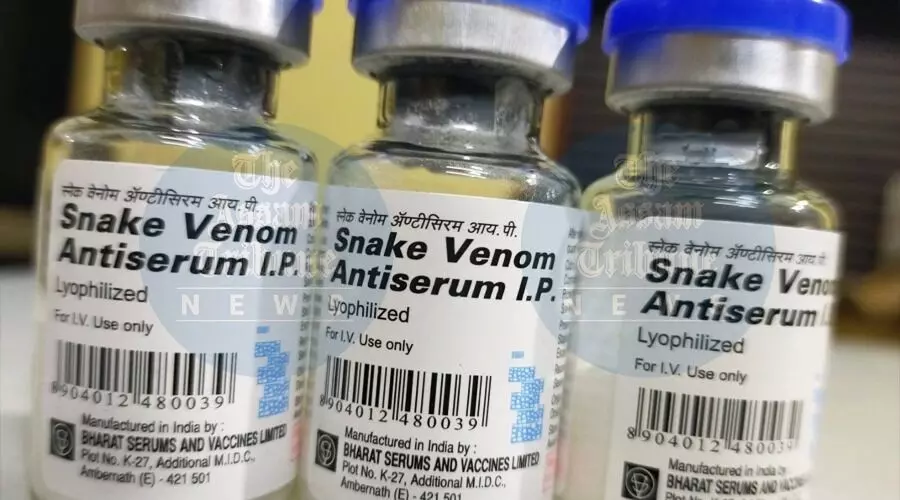Breakthrough in next-gen anti-venom development: Guwahati scientist leads the way

AT Photo: Next-generation anti-venom composition
Guwahati, Oct 19: A team of Indian scientists, headed by Prof Ashis Kumar Mukherjee, director of the Institute of Advanced Study in Science and Technology (IASST) in Guwahati, has created a novel method for producing a next-generation anti-venom composition.
For the past 30 years, Mukherjee has actively been involved in snake and scorpion venom research, quality assessment of commercial anti-venom, new methods of anti-venom production and development of novel diagnostics for the detection of snake and scorpion venoms.
These methods create epitope-string toxin-specific peptide immunogens derived from pharmacologically active major and poorly immunogenic toxins, including snake venom metalloprotease, Kunitz-type serine protease inhibitor, phospholipase A2, and three-finger toxins from the venom of the ‘Big Four’ snakes - Russell's viper (Daboia russelii), saw-scaled viper (Echis carinatus), spectacled cobra (Naja naja), and common krait (Bungarus caeruleus) - in India.
The team of scientists collaborated with Premium Serum and Vaccines Pvt Ltd of Pune.
Mukherjee, the principal investigator of this project, said that the addition of toxin epitope-string antibodies to commercial polyvalent anti-venoms (PAV) at a specified ratio markedly improved the neutralisation of snake venom enzymes and the in-vivo mitigation of lethality and pharmacological effects, including neurotoxicity, haemorrhage, necrosis, and pro-coagulant activities associated with Indian snake envenomation, including Indian monocle cobra envenomation.
Mukherjee asserted that more comprehensive pre-clinical and clinical research is essential for commercialising this innovative anti-venom formulation.
This project, supported by the Biotechnology Industry Research Assistance Council, New Delhi, is an example of an academia-industry collaboration to develop a biotech-based product.
The research has been published in the peer-reviewed journal Toxicon-X, and an Indian patent is pending approval.
The anti-venom therapy is the exclusive, recognised treatment for snakebite sufferers. In India, PAV are produced to counteract the venoms of the 'Big Four' snakes.
The venoms are predominantly sourced from southern India and have less efficacy in neutralising snake venoms from other areas. Furthermore, intra- and inter-specific variability in snake venom, influenced by characteristics such as biogeographic distribution, sex, age, and seasonality, resulted in divergent clinical results, significantly undermining the efficacy of PAV.
“Moreover, the absence of Indian monocled cobra (N. ka-outhia) venom-specific antibodies results in diminished effectiveness of the PAV in India in neutralising the venom's toxicity. This cobra species is quite common in the eastern and northeastern regions of the nation. The deficiencies of the current anti-venom therapy have prompted the advancement of novel ways to investigate and create next-generation anti-venoms with improved specificity and effectiveness,” Mukherjee said.
This next-generation anti-venom formulation to improve snake bite treatment - a neglected tropical disease in developing nations-marks a significant step forward.
“Snake envenomation is a significantly overlooked tropical illness, predominantly impacting rural communities in tropical and subtropical areas of Asia, particularly the Indian subcontinent, which exhibits the most significant global incidence of snakebites. The principal victims of this occupational hazard are impoverished agricultural workers, labourers, and shepherds, who frequently serve as the primary earners for their families, resulting in significant socio-economic consequences for these vulnerable demographic groups,” Mukherjee said.
The World Health Organization (WHO) has classified snakebite as a neglected tropical illness.
